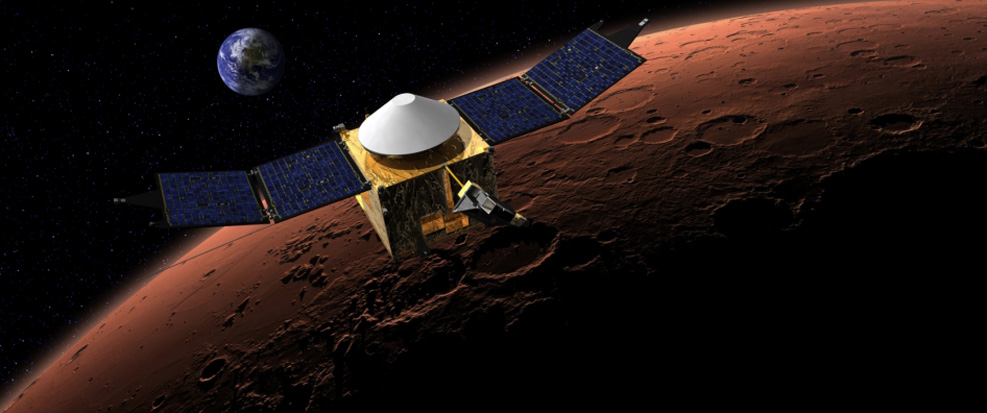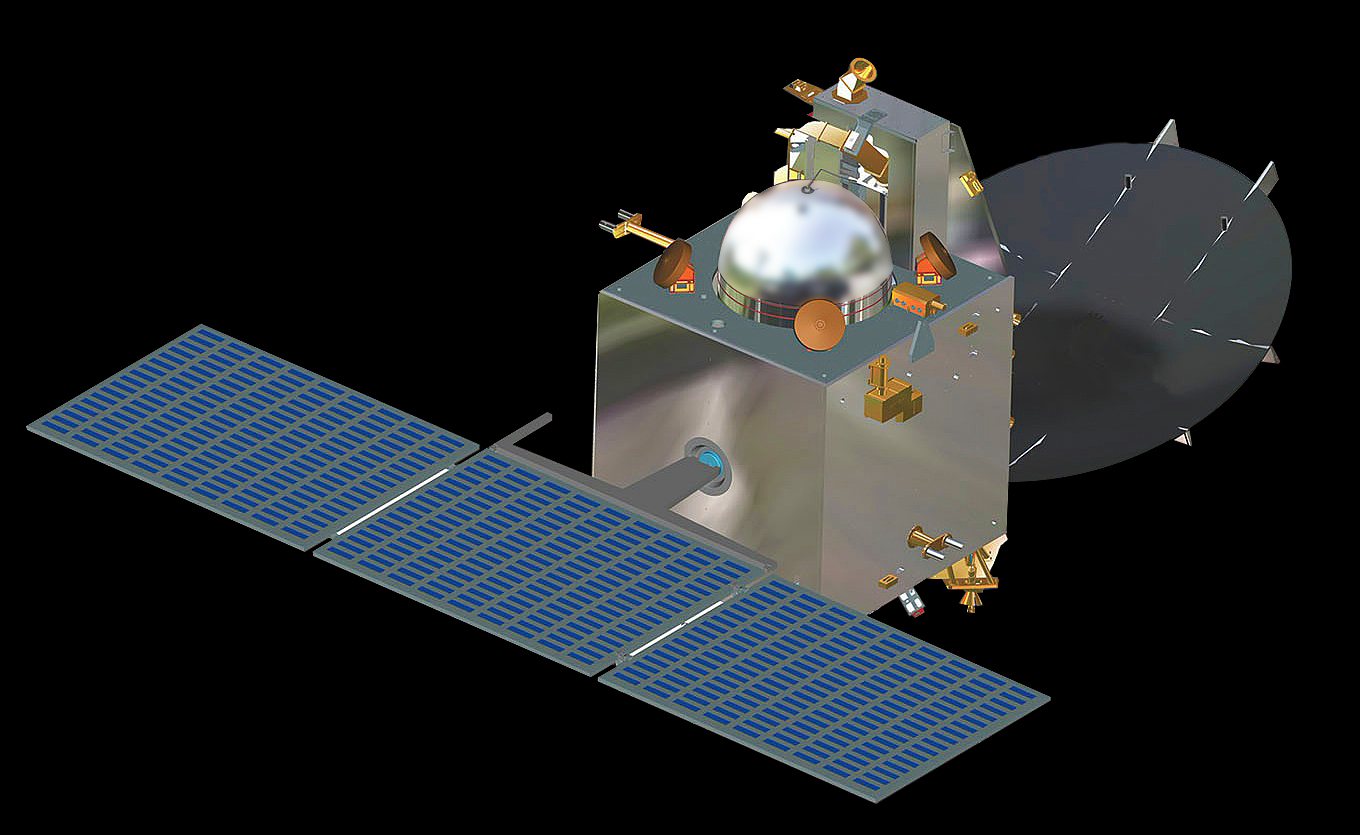Mars-Bound Probes Built by India and NASA Are Nearing the Red Planet

Two Mars-bound spacecraft are both in excellent health ahead of their September arrivals in orbit around the Red Planet, managers for both missions report.
India's Mars Orbiter Mission (MOM) is more than 80 percent of the way to Mars and performing well, according to a Facebook update posted July 21 by the Indian Space Research Organization. MOM is expected to enter orbit on Sept. 14.
The second craft, NASA's Mars Atmosphere and Volatile EvolutioN (MAVEN), is also performing well. MAVEN is scheduled to embark on its final approach to the Red Planet on Sept. 21, one week after MOM's arrival, principal investigator Bruce Jakosky said. After months of checkouts and tests, the spacecraft will now be left quiet until close to the big day. [See images of the MAVEN mission]
"We have eight science instruments, and they've all been turned off now," Jakosky, who is also the associate science director at the University of Colorado's laboratory for atmospheric and space physics, told Space.com. "We're trying to settle things down to focus on orbit insertion."
Both MOM and NASA's MAVEN probes launched toward Mars in November 2013.
Collision avoidance
With the MAVEN mission, NASA scientists are hoping to learn more about the history of Mars' upper atmosphere. For the past few months, controllers have done "operational readiness" tests, such as a mission-control-like simulation of the craft's approach to the Red Planet. These drills can help controllers get ready for any emergencies that might crop up.
One important feature of the spacecraft is its ability to maneuver six hours or 24 hours before entering orbit if controllers find out the vessel is on the wrong path, Jakosky said. This was a "lesson learned" from the 1998 Mars Climate Orbiter, which was destroyed in the planet's atmosphere because controllers could not correct a navigation error until too late.
Breaking space news, the latest updates on rocket launches, skywatching events and more!
"The key thing about the orbit insertion burn is we have one shot at it, and it has to go right. If it doesn't go right, we just go right on past Mars and never get to go back," Jakosky said.
Meanwhile, the science team has been making sure MAVEN's hardware is ready to collect the data. One instrument has already gathered information on solar activity.
In India, MOM spacecraft controllers have been priming the probe for its arrival at the Red Planet. On Thursday (Aug. 7), flight controllers tested the MOM probe's antenna that will serve as its primary communications link to Earth.
"MOM successfully completed the characterization of its Medium Gain Antenna, which will be used for communicating with Earth during the critical Mars Orbit Insertion (MOI)," ISRO officials wrote in a MOM update on Facebook yesterday. "Only 14 percent of the journey remains in its heliocentric arc towards Mars Orbit Insertion."

Cosmic close encounter
The scientists monitoring the spacecraft will also find themselves with a rare opportunity just one month after arriving at the planet. Comet Siding Spring will make its closest approach to Mars on Oct. 19, while MAVEN is still being readied for full operations to start Nov. 8. But the team will pause this work to watch the comet, Jakosky said.
"We'll make observations for about two days before and two days after the comet's closest approach," Jakosky added. "We will make observations in spectroscopic imaging, which shows us a lot about the [comet's] composition, and then observe the upper atmosphere."
While scientists are excited to catch sight of the comet — and current predictions show that spacecraft orbiting Mars should be safe during the close pass — researchers also need to keep the health of the spacecraft in mind during the flyby. MAVEN controllers aren't taking any chances, Jakosky added.
They will have the spacecraft behind the planet for 20 minutes during the comet's closest approach, and will point the solar panels edge-on to the dust to minimize the chance of a strike. Ground controllers will also turn off nonessential instruments.
The mission is designed to last one Earth year, but NASA hopes it will stretch a lot longer as it will also serve as a communications relay for the Opportunity and Curiosity rovers on the Martian surface. MAVEN's science team would also prefer a longer mission so they can continue observations.
If funding is extended, there's enough fuel to last perhaps 10 years, Jakosky said. Many components "have a lot of heritage" from the Mars Reconnaissance Orbiter, he added, which is still in good health after eight years of operations at the planet.
Follow Elizabeth Howell @howellspace. Follow us @Spacedotcom, Facebook and Google+. Original article on Space.com.
Join our Space Forums to keep talking space on the latest missions, night sky and more! And if you have a news tip, correction or comment, let us know at: community@space.com.

Elizabeth Howell (she/her), Ph.D., was a staff writer in the spaceflight channel between 2022 and 2024 specializing in Canadian space news. She was contributing writer for Space.com for 10 years from 2012 to 2024. Elizabeth's reporting includes multiple exclusives with the White House, leading world coverage about a lost-and-found space tomato on the International Space Station, witnessing five human spaceflight launches on two continents, flying parabolic, working inside a spacesuit, and participating in a simulated Mars mission. Her latest book, "Why Am I Taller?" (ECW Press, 2022) is co-written with astronaut Dave Williams.
